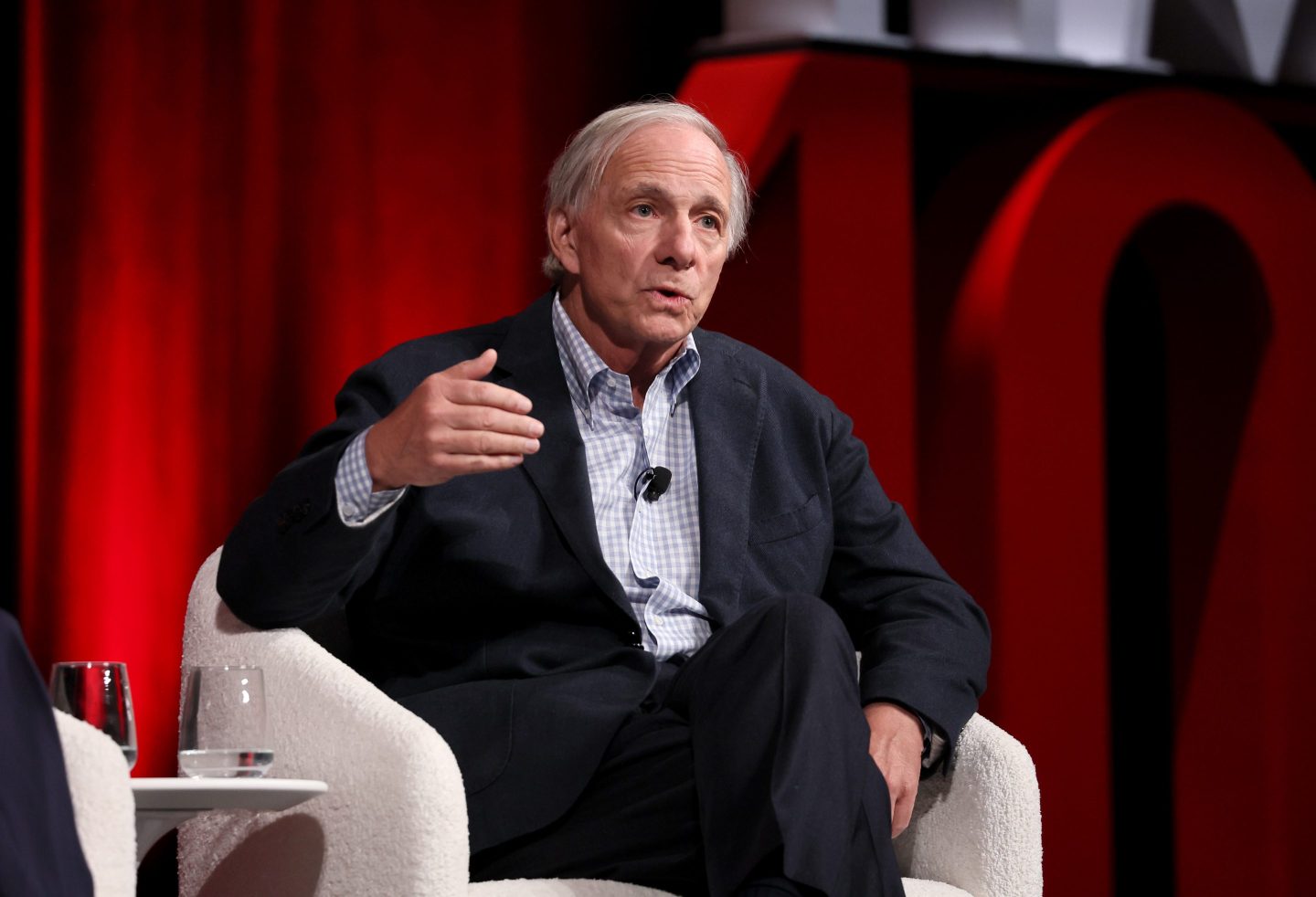- Ray Dalio warned at the Future China Global Forum that America’s $37.5 trillion debt poses a crisis risk, but argued the U.S. can’t realistically cut spending. Dalio noted a “greater realization” in the Trump administration of the debt challenge, though the growing gap between spending and revenue leaves markets wary of long-term sustainability.
On a spectrum of opinion about America’s national debt, Ray Dalio comes down on the end of “crisis.”
The Bridgewater Associates founder has long warned America’s fiscal trajectory is on a dangerous path owing to its $37.5 trillion national debt—with additional interest payments of $1.13 trillion for the 2025 fiscal year to date.
But Dalio, speaking at the Future China Global Forum in Singapore this week, doesn’t think the U.S. is in a position to pull back on its spending.
Economists aren’t concerned about the amount of U.S. national debt per se, more its debt-to-GDP ratio. If a country is borrowing at a rate which outpaces its growth, then investors at some point will begin to question the security of the returns on the debt they are holding.
This could either result in investors backing out of purchasing the debt, or demanding higher interest payments to offset the risk. Of course, a nation’s central bank could also assist in the latter option with quantitive easing—essentially printing more money to reduce the value of debt.
Governments therefore have two options to rebalance their debt-to-GDP ration: Cut spending or increase economic growth.
Dalio, 76, seems to be of the opinion that cutting spending is not an option for the U.S. government, it “cannot cut back on its spending for various reasons,” he said during the panel, per Bloomberg.
America’s national debt burden is not attributable to one side of the political spectrum or the other: It has been added to by administrations from both parties. That said, President Trump’s One Big Beautiful Bill Act has raised eyebrows, even among his supporters.
The Congressional Budget Office (CBO) estimates it will add approximately $3.4 trillion to national debt, though between 2025 and 2035 tariffs will offset $3.3 trillion of that.
Indeed, CBO projections for 2025 estimate the U.S. will spend approximately $7 trillion this year but will only bring in $5 trillion. That gap widens as time goes on—growing to $10.7 trillion in spending by 2035 and $8.03 trillion generated in revenues.
“The market in the world does not have that same sort of demand for that debt, and that creates a supply-demand imbalance,” Dalio said. He didn’t place blame on one government policy or another, saying the debt is merely “human nature.”
‘A greater realization of problems’
Despite concern over the Trump administration’s policies, the White House has acknowledged the issue of national debt and has begun touting revenue-generating ideas to offset it. Tariffs, of course, being one of them.
Another is Trump’s “Gold Cards” a visa policy which would charge rich immigrants $5 million apiece for the benefits of green card privileges “plus a route to citizenship.” Trump previously suggested he could sell millions of cards, adding: “A million cards would be worth $5 trillion, and if you sell 10 million of the cards that’s a total of $50 trillion. Well, we have $35 trillion in debt, so that would be nice.”
He noted that he would have $15 trillion “left over” if he managed to sell 10 million cards, adding: “It may be earmarked for deficit reduction, but it actually could be more money than that.”
While the maths of the plan leave some questions hanging (the majority of millionaires already live in the U.S. and as a result, the volume of people with a net worth of at least $5 million to buy a single card may be harder to drum up) economists are nonetheless pleasantly surprised by the intention to increase government revenue.
While Wharton’s Professor Joao Gomes calls Trump’s methods “peculiar”, he previously told Fortune: “You can also not deny that [Trump and his administration] bring strange forms of revenue that do change the debt picture.”
Dalio added he is also seeing more sincere planning from the White House, adding: “Speaking with Secretary Bessent and people in the administration, there is a greater realization of these problems and greater proactiveness to be able to deal with them than there was before, by a lot.”













